The Polish Pavilion at the 2025 London Design Biennale invites viewers to reflect and feel what it means to be made to wait. “Titled Records of Waiting: On Time and Ornament,” the exhibition has earned the prestigious Theme Medal at Somerset House this June, recognized for its powerful interpretation of the biennale’s theme, “Surface Reflections.” Through intricate ornament and raw data, the pavilion turns the banal act of waiting into a profound design statement about modern inequality and timeless endurance.
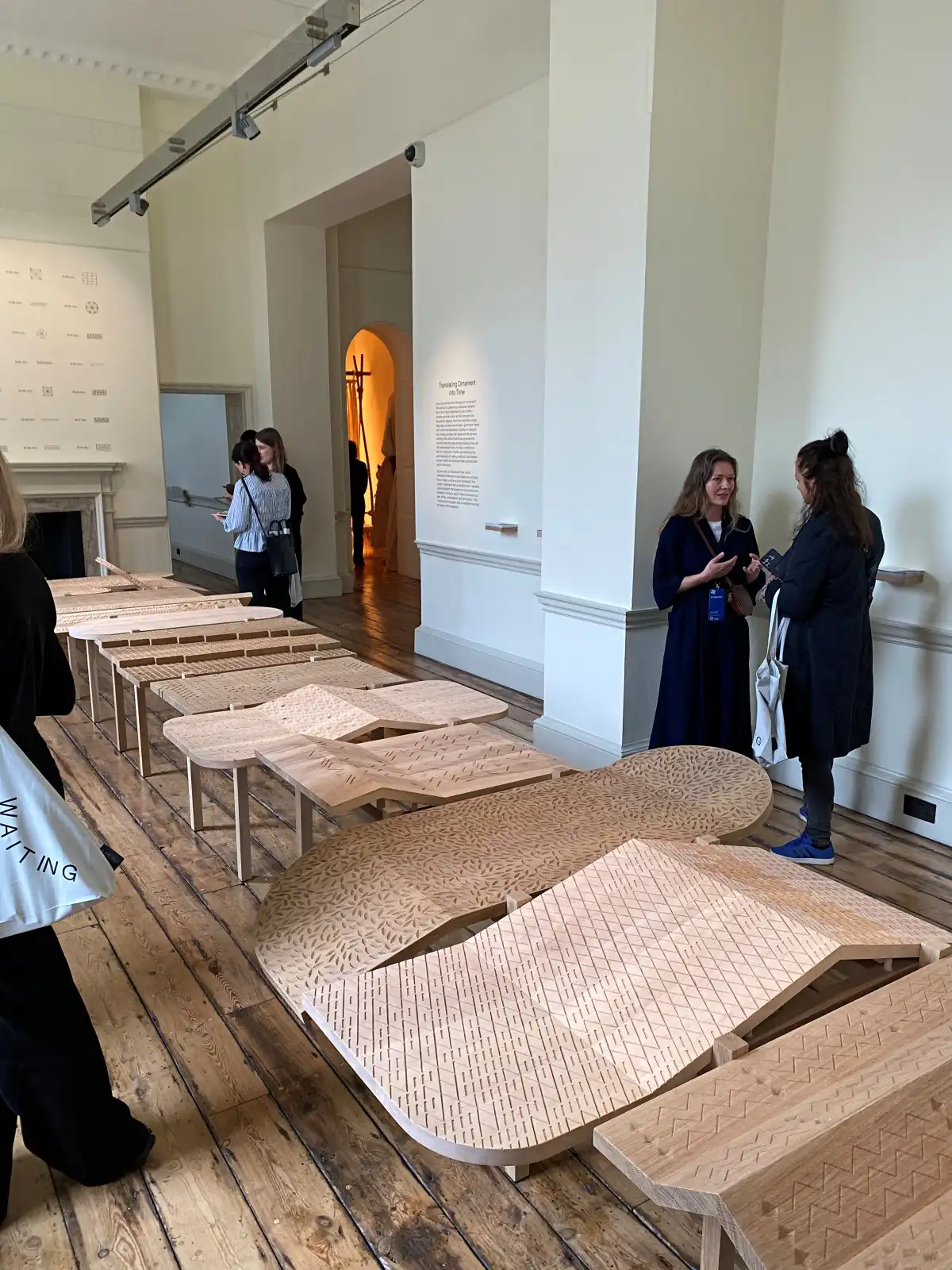
At the center of this immersive installation is a series of twelve hand-carved wooden panels, each crafted with surgical precision by master artisans and students from Zakopane’s Antoni Kenar Visual Arts Secondary School and the Władysław Matlakowski Construction School. The choice of material wood ties the project directly to the Podhale region’s centuries-old Highland carving traditions. They’re visual protest banners encoded in motifs, each one symbolizing a different form of suspended life: bureaucratic delays, years-long waits for healthcare procedures, traffic gridlock, housing applications, and visa backlogs.
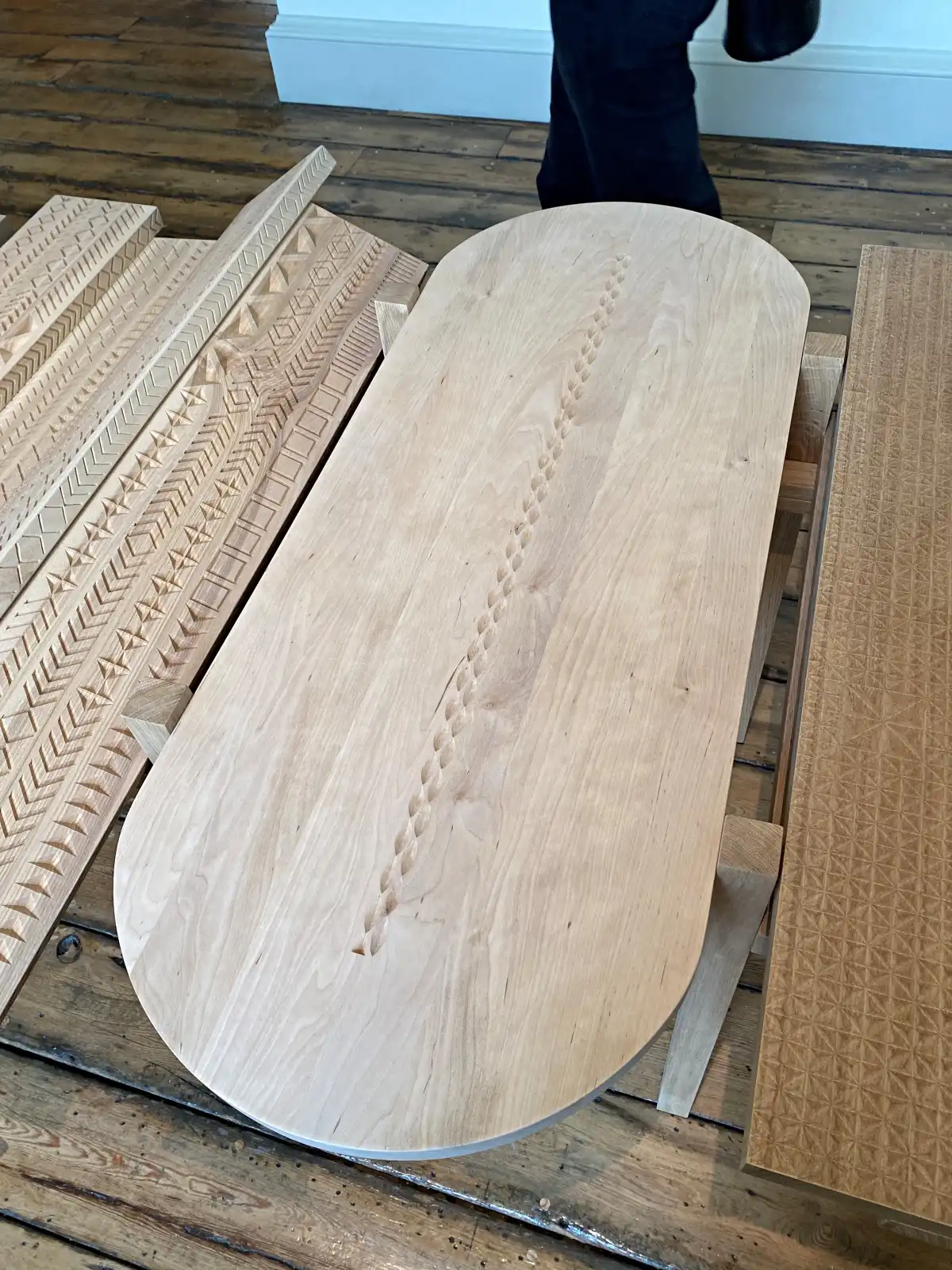
Poland’s Pavilion Reflects the Unequal Value of Time
The conceptual force behind the pavilion lies with the curatorial trio of Jakub Gawkowski, Monika Rosińska, and architect Maciej Siuda. Together, they pose a question: What does it mean that in today’s world, some people’s time is more disposable than others? While some wait comfortably for a plane, a delivery, or a reservation, others must endure systems that treat their time as worthless, be it in clinics, embassies, or unemployment lines. This unequal access to time, the curators argue, is a symptom of deeper structural divides, often invisible, yet etched into daily life.
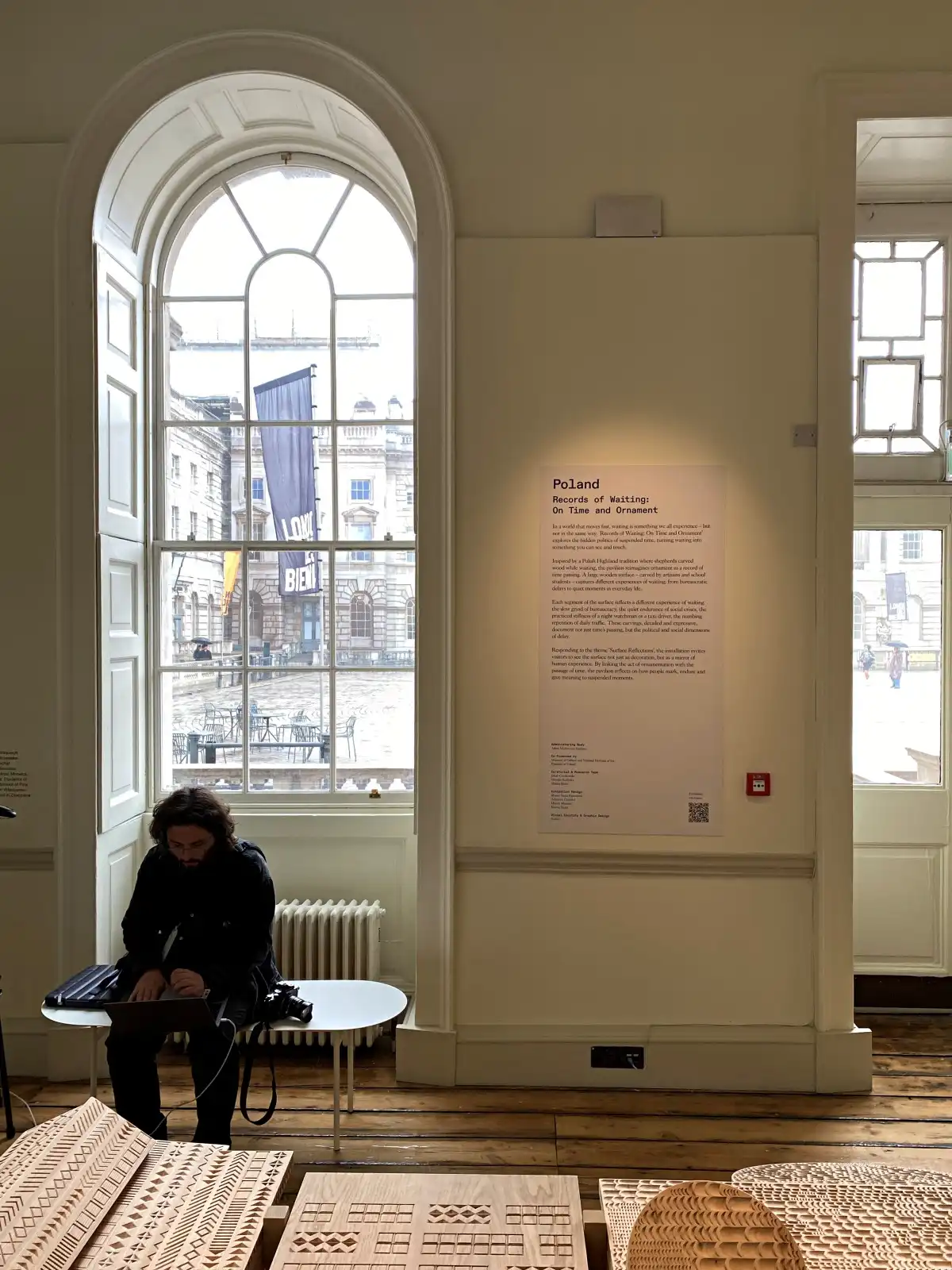
And so, these wooden panels speak with more than visual elegance. Their ornamental patterns are not random; each groove, spiral, and repetition corresponds to actual data statistical durations of real-world waiting times. In one panel, tighter carvings mirror long waits in public hospitals. In another, sparse patterns reflect the relative brevity of, say, a commute in a wealthier neighborhood. The carvings become a kind of timekeeping system. Aesthetic and sociopolitical threads are woven into each design, making the installation as intellectually sharp as it is visually rich.
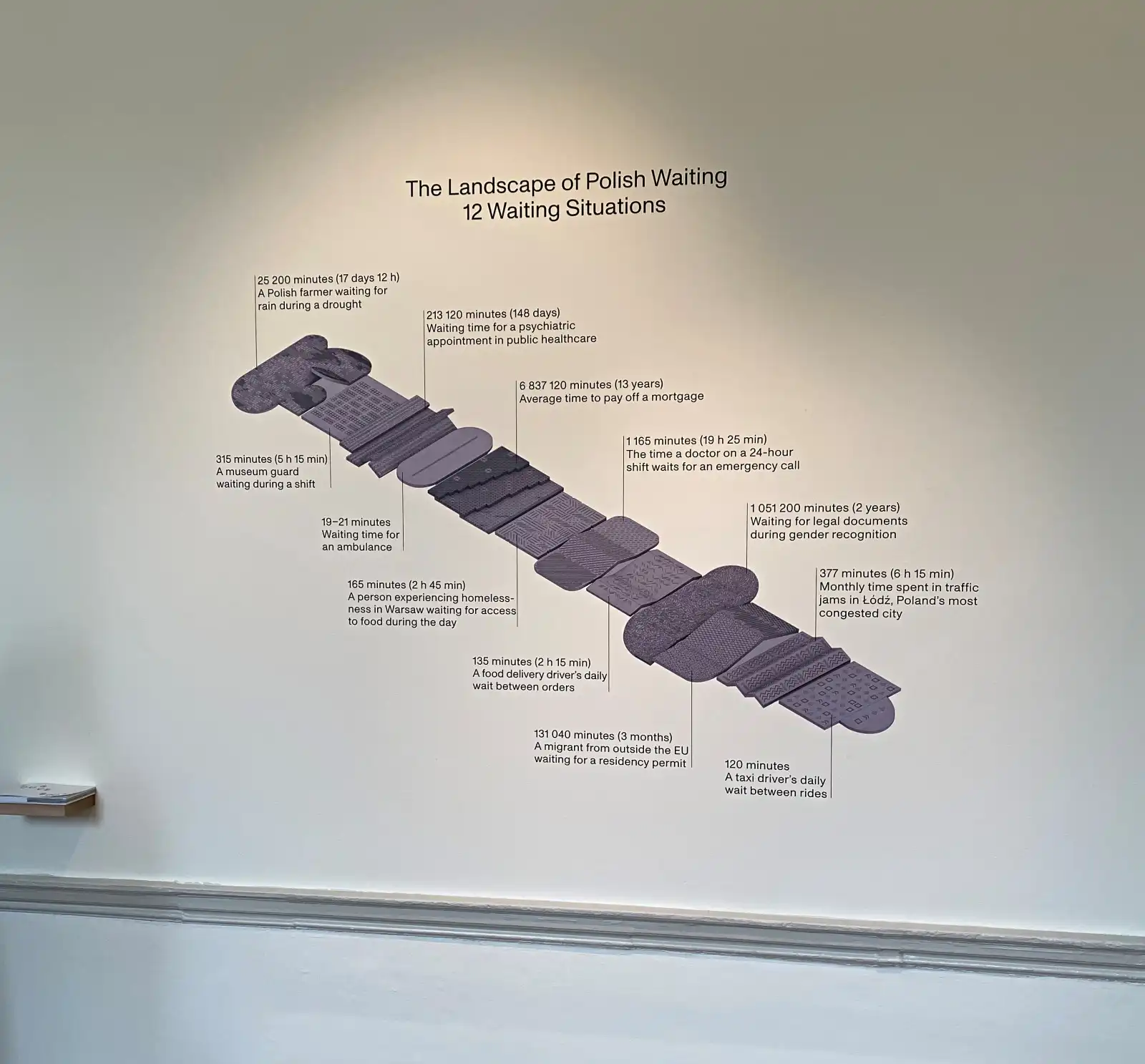
And so, these wooden panels speak with more than visual elegance. Their ornamental patterns are not random; each groove, spiral, and repetition corresponds to actual data statistical durations of real-world waiting times. In one panel, tighter carvings mirror long waits in public hospitals. In another, sparse patterns reflect the relative brevity of, say, a commute in a wealthier neighborhood. The carvings become a kind of timekeeping system. Aesthetic and sociopolitical threads are woven into each design, making the installation as intellectually sharp as it is visually rich.

Often dismissed in modernist and contemporary design as superficial, ornament here becomes a vehicle for protest. Drawing from the Podhale aesthetic, a language born from shepherds whittling away their solitude in the mountains, the exhibition resurrects carving as a form of social commentary. They pulse with urgency, coded patience, and resistance.
Often dismissed in modernist and contemporary design as superficial, ornament here becomes a vehicle for protest. Drawing from the Podhale aesthetic, a language born from shepherds whittling away their solitude in the mountains, the exhibition resurrects carving as a form of social commentary. They pulse with urgency, coded patience, and resistance.
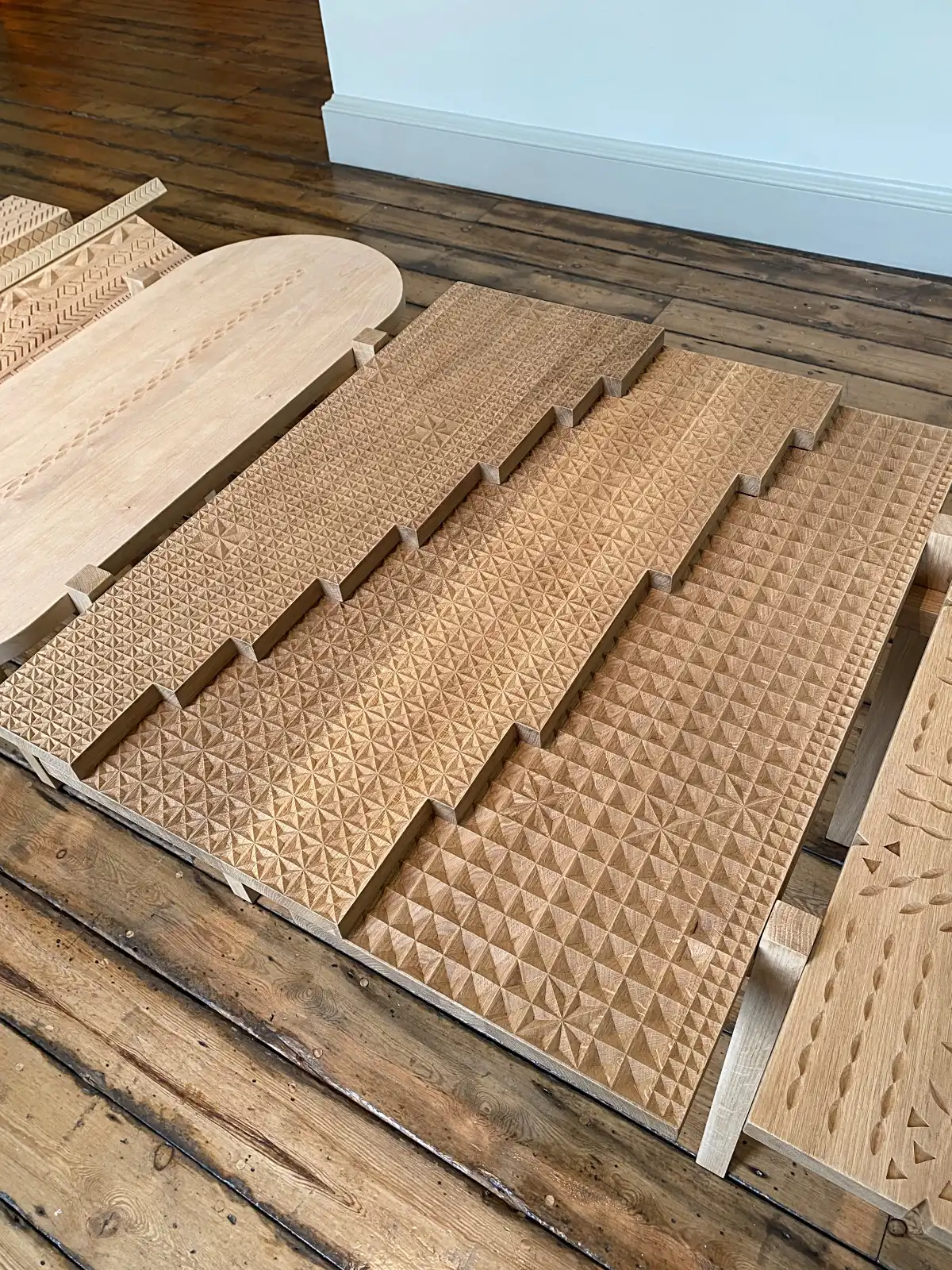
Institutions behind the project include the Adam Mickiewicz Institute, which has overseen Poland’s presence at the biennale since 2021. In 2023, their Poetics of Necessity pavilion received the Biennale’s main prize, and the 2025 recognition builds on that momentum. IAM’s director, Olga Wysocka, praised the exhibition’s subtlety and strength: “What we often consider wasted time waiting becomes a space of reflection, empathy, and even resistance.” Poland’s Minister of Culture, Hanna Wróblewska, echoed this sentiment, noting how local craft traditions can be sharpened into tools for global storytelling.
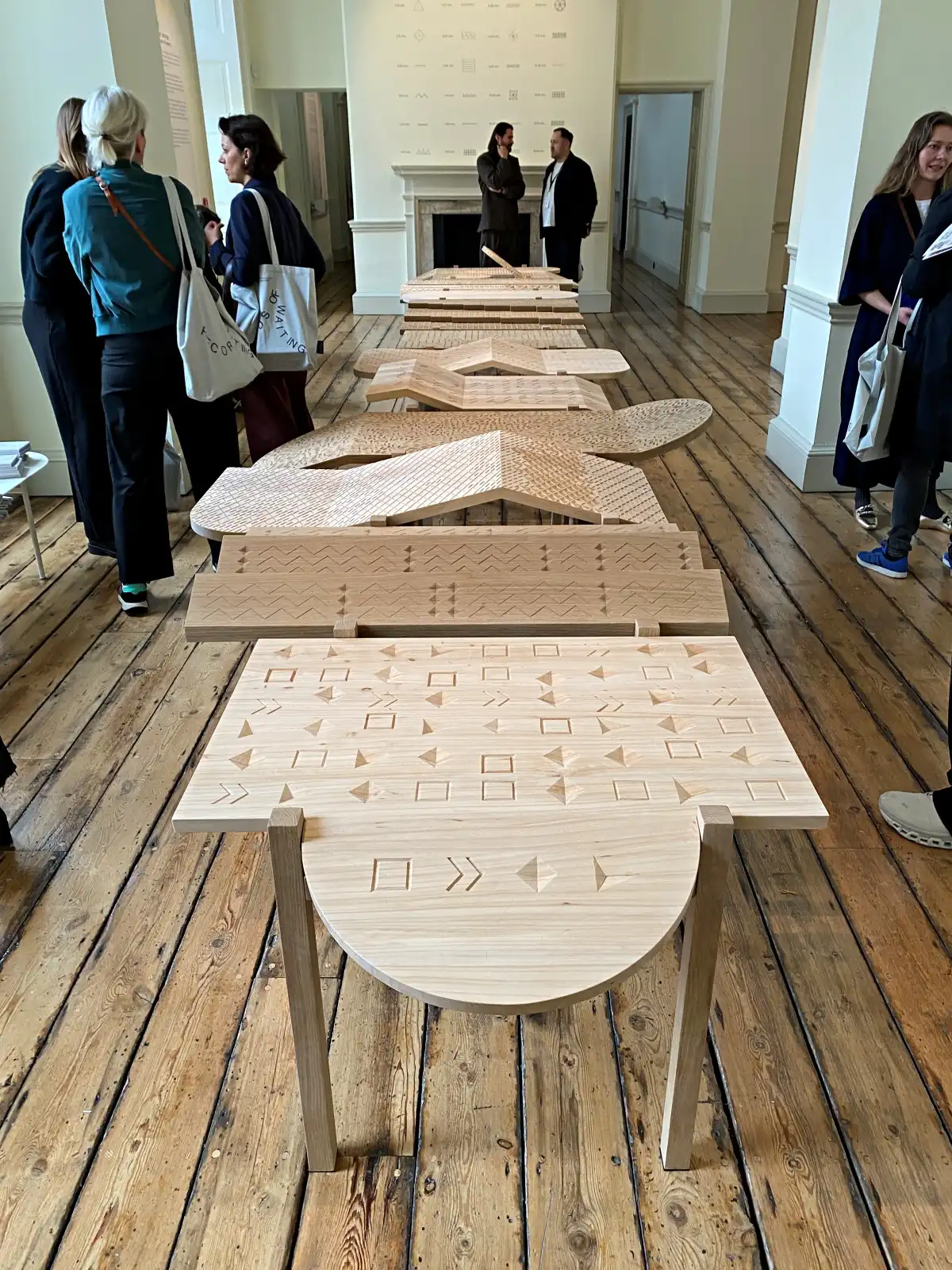
Perhaps what makes “Records of Waiting” so effective is that it trusts viewers to recognize the familiarity of these scenarios. This exhibition reminds us that not everyone’s waiting is equal. For some, time spent waiting is a minor inconvenience. For others, it’s a stolen future.

The power of the Polish Pavilion lies in this contrast. It stands in Somerset House as both a work of beauty and a mirror to systemic delay. Global visitors file through its carved corridors until June 29, offering the simple, undeniable truth that waiting is political.
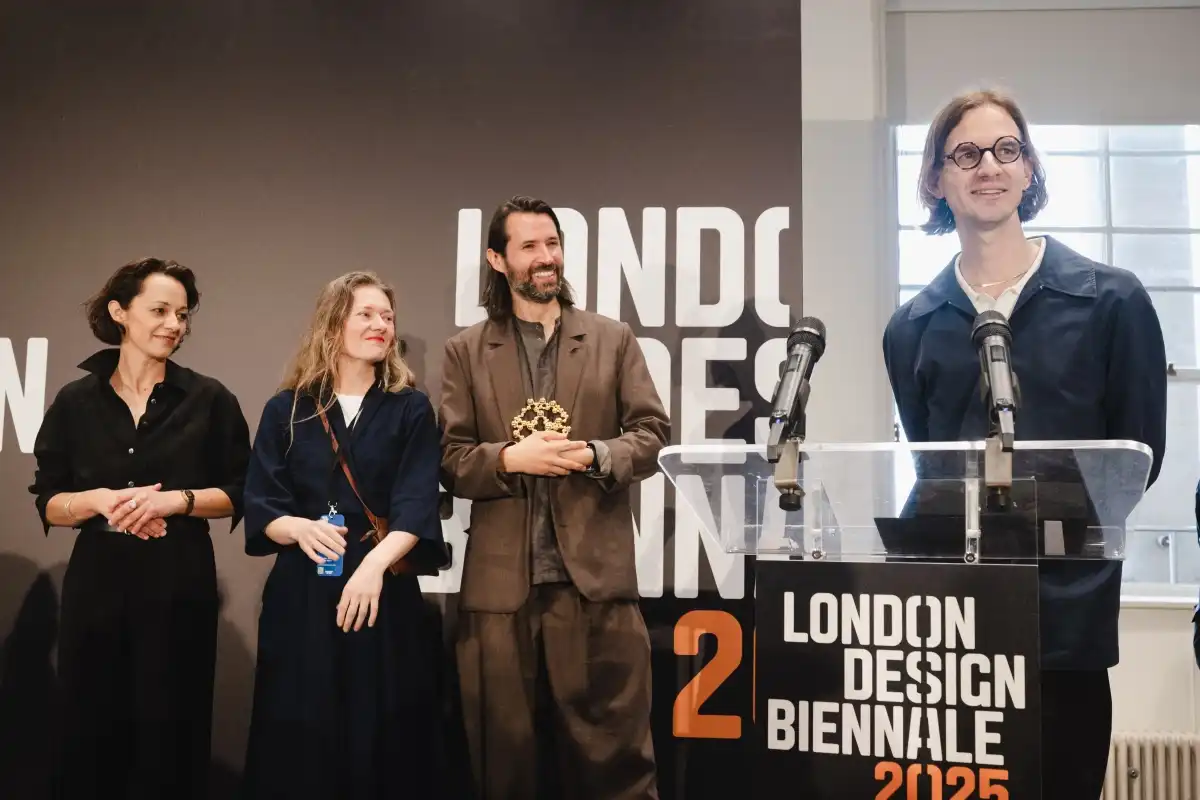
As design continues to grapple with how to reflect, confront, and change the world around us, Poland’s “Records of Waiting” is a masterclass in how craft, data, and human experience can converge into something urgent and unforgettable.
Images courtesy of the London Design Biennale award ceremony.


























Leave a comment